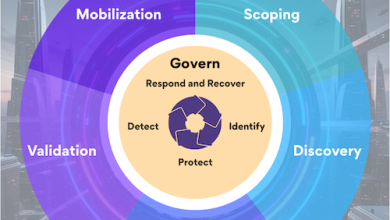For much of that time, keeping things powered up, tools running, lights on and batteries topped up, meant a loud gas-powered unit humming in the corner and a never-ending search for fuel. Crews are now rethinking that routine. Today’s solar generator, also known as a solar powered generator or a portable power station, provides clean, emissions-free electricity that works the way onsite construction crews actually do. From interior fit-outs and remote decks to punch-list nights in noise-sensitive neighborhoods, solar power is quickly transitioning from niche backup to practical daily tool.
What a Solar Powered Portable Generator Really Is
A ready-to-work solar generator comprises four central elements, each of which interacts with the other to work as a single unit:
- Solar panels capture energy.
- The MPPT charge controller efficiently charges and protects the battery.
- Determined by the operating speeds and telescope weight, a large capacity lithium battery stores energy, preferably lithium iron phosphate (LFP) for extended cycle life and temperature stability.
- There is nonsense from a pure-sine-wave inverter to run tools and job-site electronics at 120V or 240VAC.
The majority have app control, multiple AC outlets, high-output USB-C that can be used to charge laptops and tool batteries, and expansion ports for extra batteries or more solar input.
Why Crews Like Solar on Real Job Sites
Silence that enhances communication and achievement
Solar generators run nearly silently. Carpenters can call cuts silently, foremen can take client calls next to the unit and night work is feasible in neighborhoods with tight noise ordinances.
Clean air and compliance
No exhaust, required in most gas work, means healthier indoor environments for remodels, schools, clinics and occupied spaces. It aids in compliance if you set units where there are ventilation or emission restrictions and cuts down on long runs of temporary cords to keep gas units outside.
Predictable operating costs
Gas prices rise and fall and, while idling, money goes out the tailpipe. Solar plus batteries converts sunlight into a daily energy ration. In bad weather, most go for grid charging, vehicle input or in the case of hybrid systems, even a small backup generator. Crews are budgeting energy instead of fuel.
Safer, cooler, easier
No flammable fuel on trucks or inside buildings. No hot mufflers. Less tripping because it can stand right where you work, then roll to the next job with built-in handles and wheels.
Smart, portable, modular
Other permits include battery stacking, quick charging tools with split-phase 240 V and parallel inverters. Teams can begin with a small initial group, and add capacity as projects expand without re-engineering the entire infrastructure.
Solar vs Gas on the Job
| Factor | Solar Generator | Gas Generator |
| Startup | Instant, push-button | Pull-start or electric, warm-up |
| Noise | Near-silent | Loud, often restricted |
| Emissions | At the point of use: zero | In exhausts and indoors |
| Power source | Sun, grid or vehicle | Gasoline or propane |
| Maintenance | Minimal | Oil changes, filters, spark plugs |
| Surge capacity | Whose control if inverter is sized correctly | Typically good but noisy |
| Indoor use | Yes, with ventilation for charging best practice | Not safe |
Bottom line: There is still a place for a gas unit, if you have heavy, high-surge loads all the time. For most day-to-day tasks, lamps, dust extraction, soft-start compressors, managed surge saws, chargers for laptops and labelers and by routers, as well as cameras, solar generators account for more hours than you’d imagine.
Winning Job Examples You Can Put to Use
Interior remodels and fit-outs
Quiet power keeps tenants cool and complaint-free. Crews power running task lights, vacs, oscillating tools and multiple rapid chargers with the unit indoors and keep their job site free of fumes.
Remote and off-grid work
Deck builds, fence lines, sheds and outbuildings receive reliable power with no transporting of fuel. And some panels or a folding rack charge the system while you work.
Night work and noise-sensitive zones
Paving prep, construction signage, punch lists and security lighting after dark are simpler when a power source is nearly silent.
Disaster response and facility maintenance
When the grid is weak, a solar powered generator powers radios, fans, inspection tablets, LED towers and a fuel unit becomes secondary, not primary.
An easy sizing method (with one real exemple)
1) List your devices and watts
LED construction lights 300W, dust evacuation system 1000 W, battery chargers and electronics 200W, trim router intermittent use 600W.
2) Estimate daily runtime
Lights 5 hours = 1.5 kWh. Dust extractor 2 hours = 2.0 kW.h. Chargers, electronics 4 hrs = 0.8 kWh. Router 1 hour distributed on tasks = 0.6 kWh.
Daily energy needs ≈ 4.9 kWh.
3) Choose battery capacity
Choose at least 20 to 30 percent headroom. For 4.9 kWh, aim for 6–7 kWh of usable battery so productivity doesn’t depend on perfect sun.
4) Check inverter rating and surge
Add likely simultaneous loads. If the dust collector (1,000 W) and shop lights (300 W) will be on simultaneously while a tool starts, an inverter in the range of 2,000 to 3,000 watts with robust surge capacity enables smooth starting.
5) Size the solar input
To replenish ~5 kWh daily at approximately 5 hours of peak sun, divide 5,000 Wh by 5 h = 1000 W of panels used to replace this energy in a day. Factor in a 20 percent margin with the potential for clouds and panel angle, and 1,200 W is also an attainable mark.
6) Plan your recharge pathways
Use solar when possible, top off from a normal outlet through the night and have a car charger cable for power on the move.
Buying Checklist for Construction Teams
- Battery chemistry: LFP provides a long cycle life and consistent performance in all climates.
- Inverter quality: Pure sign wave, 120 V or split-phase 240 V if for some compressors or certain welders.
- Surge overhead: Demand clear, continuous and surge ratings; higher-inrush tools require more headroom.
- Solar in: Multiple MPPTs, high DC voltage range and at least 1,000 to 2,000 W in for daytime recovery.
- Scalability: Stackable batteries, parallel inverters and DC external bus.
- I/O and ergonomics: Appropriate 20A receptacles, lock options, protectable plugs, IP ratings for dousing with water, wheels or feet or some sort of lifting point.
- Smart functions: App monitoring, usage history statistics, timer charging, low-temperature single charging protection.
- Service and warranty: Reliable support, HP authorised representatives or service centres, replacement of expandable fans or ports, as well as clear cycling or year coverage.
Job-Site Tips for Best Results
- Place panels where they have the longest arc of sun time in a day, and tip them slightly south if you are in the northern hemisphere.
- Keep panels clean of dust.
- House the power station in the middle, to minimize lengths and voltage drop.
- Employ soft-start or variable-speed tools, if possible, to reduce the surge overload.
- Charge overnight from grid power prior to a high-demand day.
- Keep the unit in a lockable rolling case, especially on street-side jobs.
- Label outlet circuits so that everyone knows what the system can handle at any given time.
Common Misconceptions
It is useful only if the sun is out. In fact, it is the battery that does the heavy lifting during daylight hours and then recharges them. You can also recharge, if needed, from the grid or a vehicle.
It cannot run real tools. Inverters that are the right size cater most of your average loads. If you have big stationary saws, and or large compressors, then you might need 240 V split-phase or a mixture.
It is too slow to recharge. With a kilowatt or more of solar and AC charging during the night, crews begin every day with a fully charged battery and collect sunlight as an added bonus.
It isn’t rugged enough for sites. There are many systems with reinforced frames, sealed ports and jobsite-ready wheels and handles.
The Payoff for Contractors
Contractors using solar generators say they can maintain good relationships with clients who are spared an engine drone and the fumes that come from the occupied space. Managers appreciate being able to budget for energy costs and tracking usage by crew. Estimators may be able to include clean power in bids, though it’s more realistic on public projects and sustainability-oriented clients. The quiet power source also limits friction with neighbors and inspectors, a distinction that can be the difference between a good day or bad.
Conclusion: A Better Way to Fuel the Work
Transitioning to a solar generator doesn’t only mean going green. It is a matter of better communication, cleaner air, energy costs that can be predicted and fewer job-site headaches. A right sized solar powered generator with smart charging gives crews dependable power for what they do best, and still have the capacity for heavy loads via “split-phase” or hybrid backups. For many contractors, that mix is the real-world road to quieter, safer, more professional jobsites that get done when they’re supposed to and win the next bid.
FAQs
Will a solar generator power tools such as a miter or table saw?
Yes, if the inverter surge and continuous ratings are high enough. Many construction site-friendly systems will give you 2,000–3,000 watts continuous with much more in surge for a few seconds. For a very large stationary machine or one that does frequent high-surge starts, try split-phase 240 V, or a hybrid approach.
How long will a solar powered generator run for an average remodel day?
Life will depend on the battery size and your load profile. A 6 kWh power pack is good for around five hours at a constant 1,200 watts or a combination of lighter load at full shift stretch. Combine with solar and ac boost cables for up to 100 additional hours of run time.
Should I buy specific panels or will any solar kit do?
Utilize panels that meet your unit’s voltage and connector needs, along with as many MPPT channels as possible. Folding, rigid framed or rugged-panels will all work if they have the right input.
What, for instance, is the impact for cloudy days or shade from buildings?
You’re more dependent on stored energy and AC top-ups. Plan for capacity with a cushion and position panels where they can capture sun on the move windows between buildings.
Is lithium iron phosphate safe in busy job site setting?
LFP battery is trending for its stability and a large cycle life. Continue to follow manufacturer recommendations, avoid impact and do not charge at temperatures below the minimum specified without built-in preheating.
Will I have to change the way I bid projects if I go solar?
You can cut items of fuel and maintenance, add a renewable power clause. Many clients find quieter, cleaner construction sites and faster approvals for interior work o



